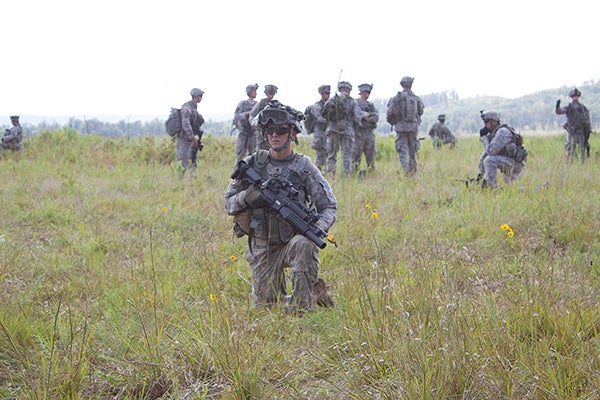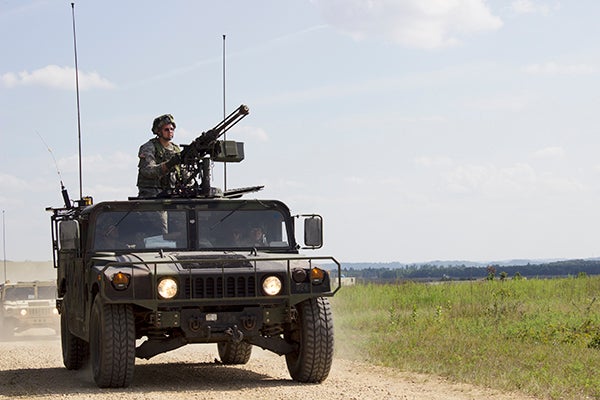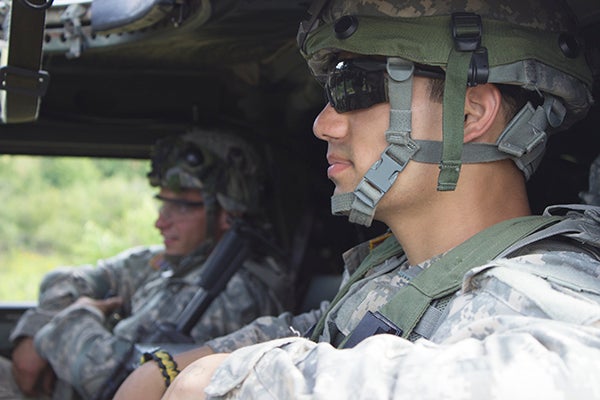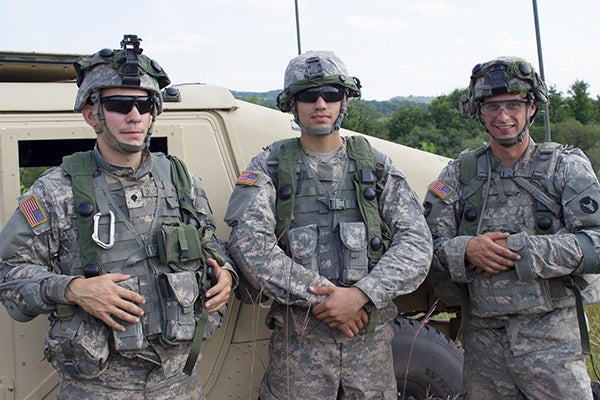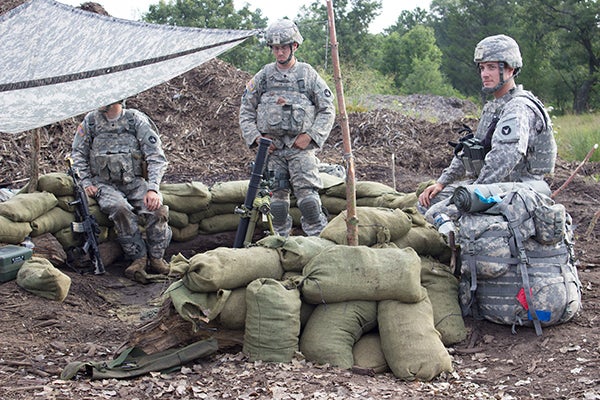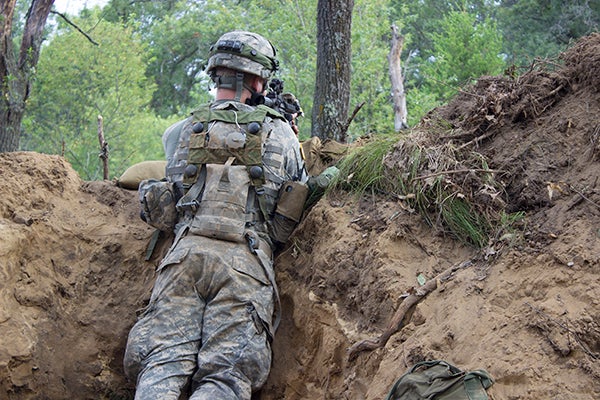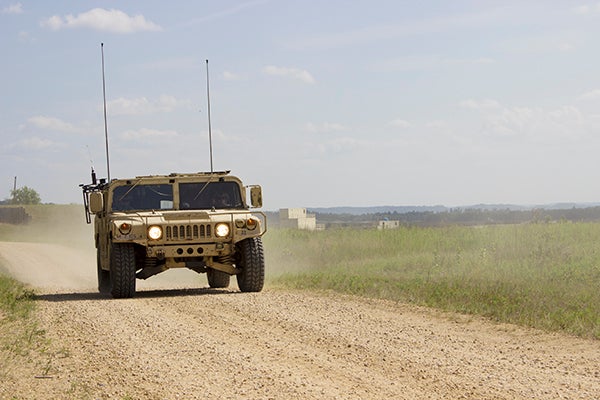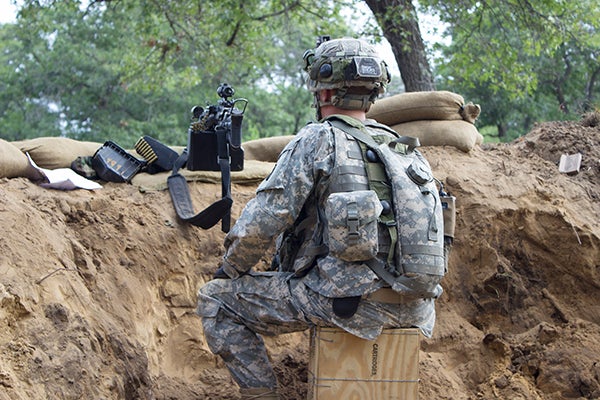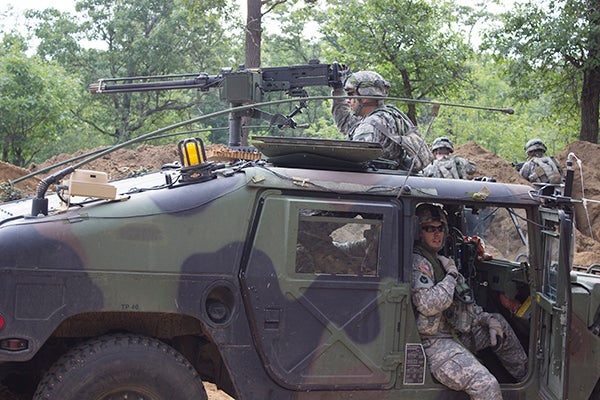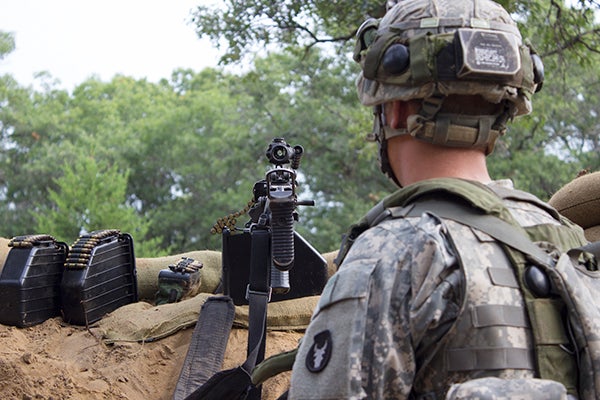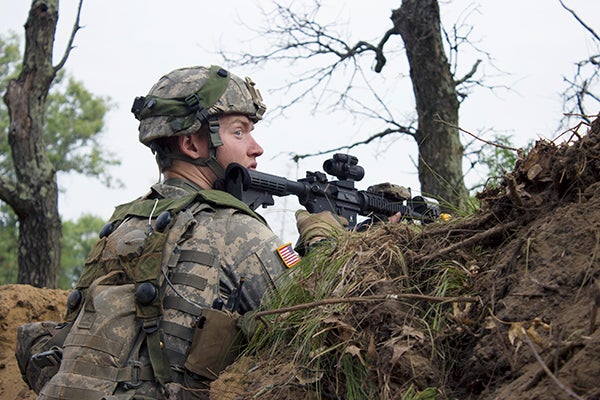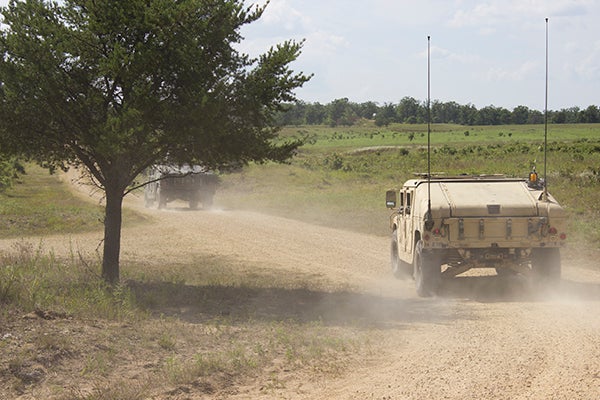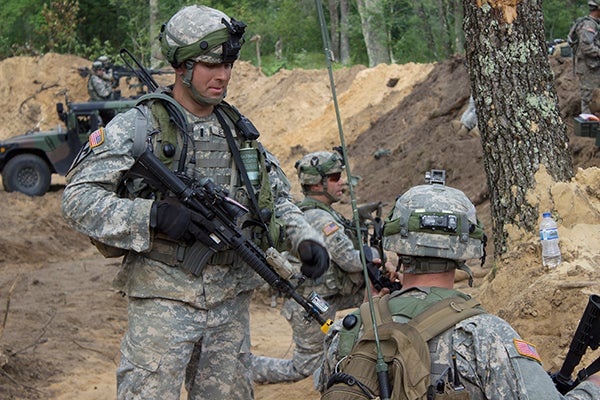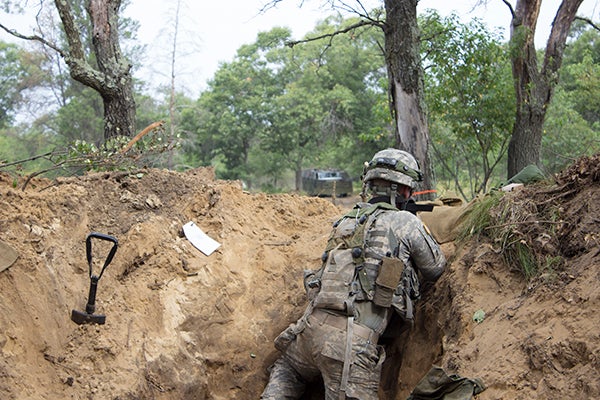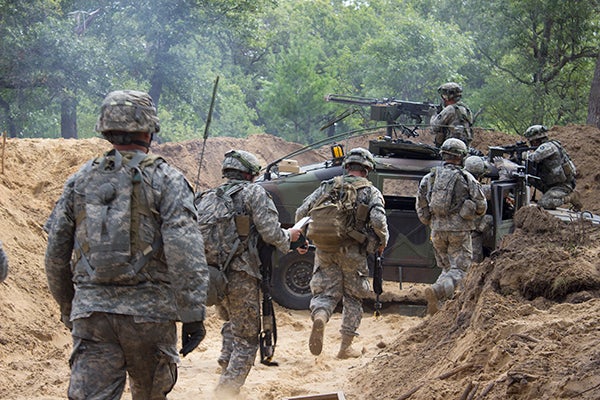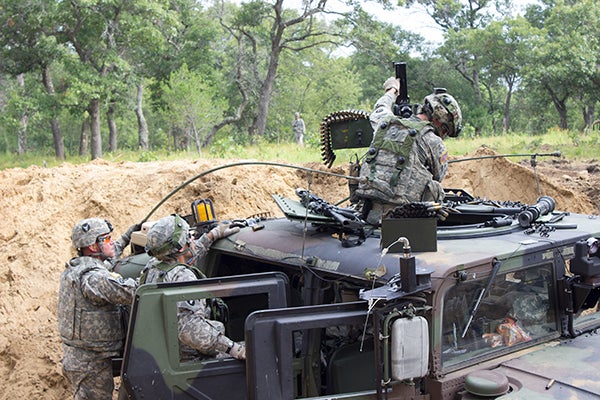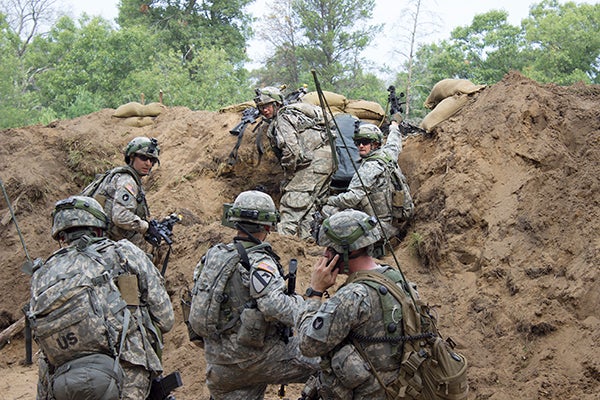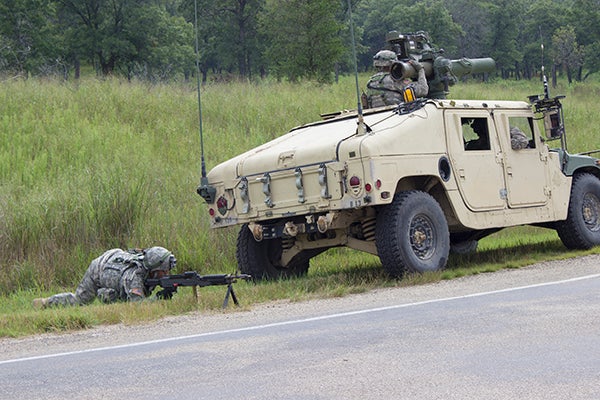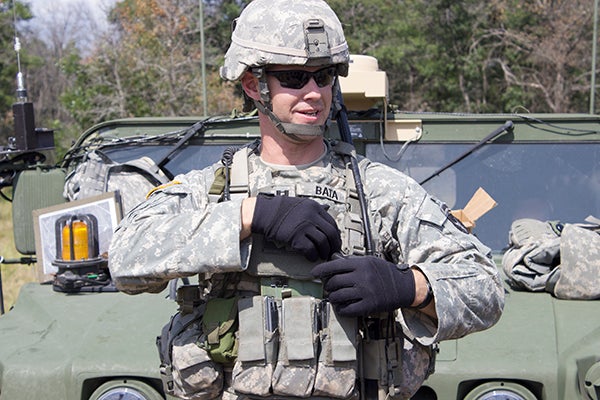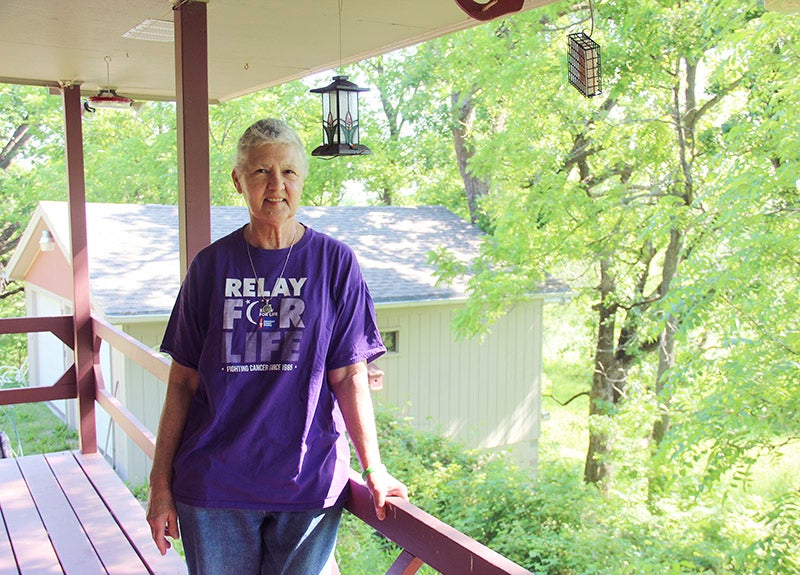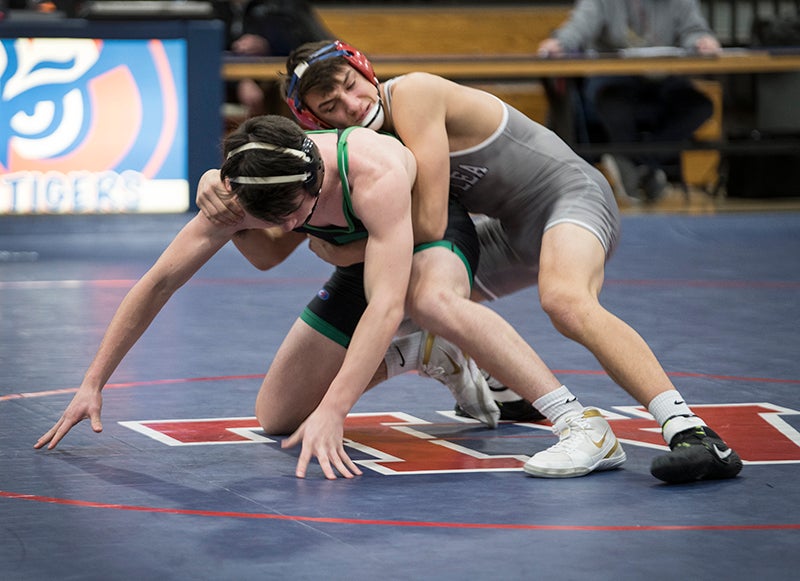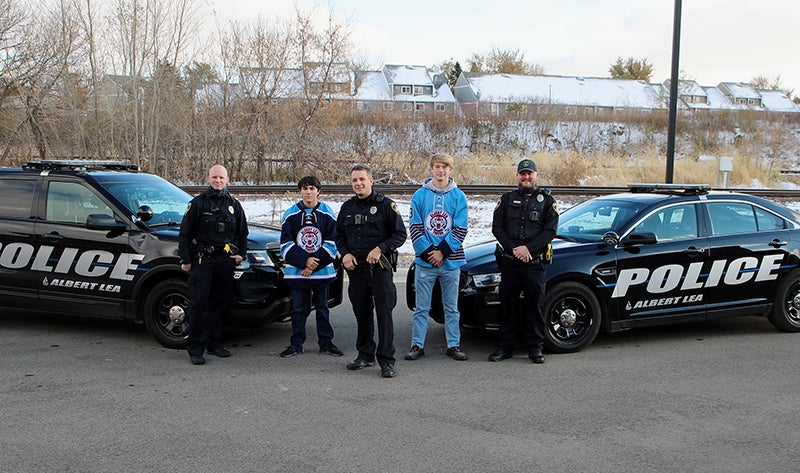For these soldiers, it’s about heavy weapons
Published 10:10 am Friday, August 15, 2014
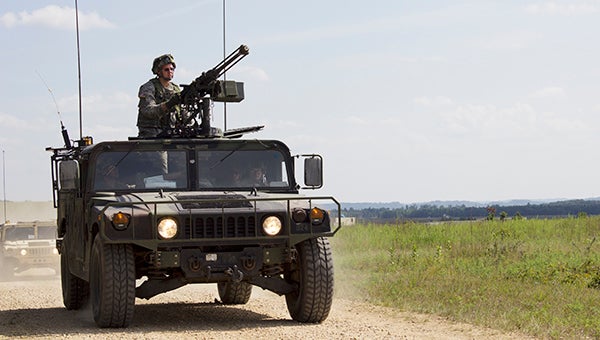
Members of the 2-135 IN Delta Company out of Albert Lea drive a Humvee with a large machine gun mounted on top to a training exercise at Fort McCoy, Wis. See more photos in the Sunday Tribune. – Hannah Dillon/Albert Lea Tribune
Delta company travels to Wisconsin for training
Editor’s note: This is the second of a two-part series on the Albert Lea National Guard unit training in Wisconsin.
FORT MCCOY, Wis. — For about two weeks a year, Minnesota National Guard and Army Reserve service members train. And train. And train.
The soldiers train almost nonstop to keep themselves up to snuff for deployment.
Members of the Guard and Reserve in southern Minnesota headed to Fort McCoy between Sparta and Tomah in Wisconsin for annual training on Aug. 1. Training concludes Sunday.
The Albert Lea Armory operates in the 2nd Battalion, 135th Infantry Regiment, or 2-135 IN. This battalion provides soldiers to the 1st Brigade Combat Team of the 34th Infantry Division, or the 1/34th BCT.
The 34th Infantry Division, or the Red Bulls, has soldiers from Minnesota, Iowa and Western Wisconsin. There are five brigades in the division and six battalions in each brigade. Each battalion has four companies.
In the 2-135 IN, Alpha Company is out of west Saint Paul, Bravo Company is out of Rochester, Charlie Company is out of Winona and Delta Company is out of Albert Lea. The battalion is headquartered in Mankato.
The Delta Company specializes in heavy weaponry, such as .50-caliber machine guns mounted on a Humvee. These guns can weigh up to 175 pounds with all their equipment.
Capt. Laddie Bata, a police sergeant from Owatonna and a member of Bravo Company, said that a brigade is the smallest self-sustainable group. It has aviation, transport, cooks and tanks, among other things.
During the two-week training period, Bata and the Bravo Company spent part of their time working on lane training.
Lane training is used to train smaller units, such as companies, on collective tasks with an objective. One lane training exercise Bravo Company did was offensive, where they hid in the trees in a prone position before running out to shoot blanks at targets. In the coming days, the soldiers would switch to live bullets.
Joining the Bravo Company, which are straight-leg soldiers on foot, was the Delta Company and its gun trucks.
An important component to the Guard and Reserve is a cycle of readiness, Bata said. Ten to 18 percent of soldiers haven’t been through annual training, so getting those soldiers up to speed is important.
Although there is housing on base, most of the time soldiers are in the field in — quite literally — explosive training environments.
Capt. Michael Rose of Charlie Company said his soldiers had been in place for about 24 hours on Aug. 8 during a defensive lane training exercise.
A small group of soldiers were positioned quite a ways from the defensive line as they were training with 60-millimeter mortars. Mortars are a type of indirect fire that can shoot 30 rounds per minute for four minutes per gun. These rounds can travel over 3,400 meters and have a 15-meter kill radius.
The defensive line was behind a berm that had been created by engineers and trucks, but on a battlefield the soldiers may have to dig their own berm or trench.
These soldiers were led by 1st Sgt. Paul Oakes, who said in over 24 hours the soldiers had been attacked at nightfall and dawn. They had only gotten four hours of sleep and woke up at 3:30 a.m.
This training exercise was different than Bata’s offensive training, as “live” enemies were used versus targets. Once the third and final assault came on the defensive line, the field was filled with the noise of yelling and guns firing blanks — most notably Delta Company’s massive .50-caliber machine guns.
This exercise also had the added stress of caring for casualties. A soldier knew if he had become a casualty because a device on his chest would beep loudly. He would then be transported away from the front line to a designated spot where he could be looked at by a medic and the bleeding could be stopped.
Another stress was that one of Delta Company’s machine guns stopped working unexpectedly — something that 2nd Lt. John Lesch said is very subjective in a training exercise.
Lesch, an assistant city attorney from St. Paul and a Minnesota House representative, said some graders would say the soldiers would be dead in that situation, while others, who might have experience with that situation, would say they were still alive.
These graders milled about the field during all of the training exercises, observing how the soldiers performed. Each soldier was equipped with a transmitter that communicated with a satellite, giving a birds-eye view of the training that could be later reviewed.
Across the board, all of the company leadership was pleased with how their soldiers had performed so far.
“These are our sons and daughters expected to do our dirtiest work,” Lesch said of the soldiers, referring to the importance of keeping the forces trained and ready.
One thing that was increasingly noticeable, however, was the lack of those daughters on the front lines. Company leadership said that the Guard and Reserve are working on integrating women into the front line, and all of the soldiers said that gender didn’t matter as long as the soldier next to them could do their job.
- A specialist with the 2-135 IN Bravo Company holds an M4 carbine with an M203 grenade launcher attachment. – Hannah Dillon/Albert Lea Tribune
- Members of the 2-135 IN Delta Company out of Albert Lea drive a Humvee with a large machine gun mounted on top to a training exercise at Fort McCoy, Wis. See more photos in the Sunday Tribune. – Hannah Dillon/Albert Lea Tribune
- Michaell Serraperez, right, of Rochester, and Jordan Hall, of Austin, both of the 2-135 IN Delta Company out of Albert Lea, sit in the back of a Humvee before heading off to another training exercise. – Hannah Dillon/Albert Lea Tribune
- Pictured from right are Brandon Skluzacek, of Montgomery, Michaell Serraperez, of Rochester, and Jordan Hall, of Austin, in front of a Humvee. The three are part of 2-135 IN Delta Company out of Albert Lea. – Hannah Dillon/Albert Lea Tribune
- Three soldiers with the 2-135 IN Charlie Company wait to begin an exercise with their mortar, practicing loading and aiming it at an enemy. The mortars can launch ammunition up to 3,400 meters and have a 15 meter kill radius. – Hannah Dillon/Albert Lea Tribune
- A soldier hides behind a berm, his gun poised to attack, during a defensive exercise at Fort McCoy, Wis. – Hannah Dillon/Albert Lea Tribune
- Members of the 2-135 IN Delta Company follow an armed Humvee to an offensive training drill at Fort McCoy, Wis. – Hannah Dillon/Albert Lea Tribune
- While waiting for a defensive exercise to start, a soldier watches the terrain while sitting on an empty cartridge box. – Hannah Dillon/Albert Lea Tribune
- Some soldiers from the 2-135 IN Delta Company wait behind the berm with their trucks armed with .50 caliber machine guns ready to strike. – Hannah Dillon/Albert Lea Tribune
- During this defensive exercise, members of the 2-135 IN Charlie Company out of Winona were attacked three times at random over the course of two days by live enemies. – Hannah Dillon/Albert Lea Tribune
- A soldier in the 2-135 IN Charlie Company looks over his shoulder before a defensive exercise starts at Fort McCoy, Wis. – Hannah Dillon/Albert Lea Tribune
- Two Humvees driven by members of the Delta Company out of Albert Lea follow a group of soldiers into a training exercise at Fort McCoy, Wis. – Hannah Dillon/Albert Lea Tribune
- A lieutenant in the 2-135 IN Charlie Company talks to one of his forward observers before a defensive exercise. – Hannah Dillon/Albert Lea Tribune
- A soldier with the 2-135 IN Charlie Company readies himself as an enemy truck drives on to the field. – Hannah Dillon/Albert Lea Tribune
- Local troops training at Fort McCoy in July.
- 1st Sgt. Paul Oakes, far left, watches as a soldier with the 2-135 IN Delta Company tries to fix a .50 caliber machine gun. – Hannah Dillon/Albert Lea Tribune
- A lieutenant, bottom center, and two forward observers talk to three soldiers during a defensive exercise at Fort McCoy, Wis. – Hannah Dillon/Albert Lea Tribune
- Soldiers with the 2-135 IN Delta Company aim to take out snipers during an exercise where the Alpha Company out of West St. Paul entered and cleared a building. – Hannah Dillon/Albert Lea Tribune
- Capt. Laddie Bata prepares to go out in the field by putting on his helmet. – Hannah Dillon/Albert Lea Tribune


